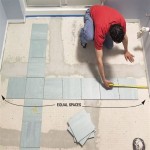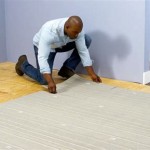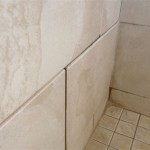Can You Tile On Top Of Laminate Countertops? Weighing the Pros and Cons
The question of whether one can tile over existing laminate countertops is a common one among homeowners looking to refresh their kitchens or bathrooms without undertaking a complete renovation. Laminate countertops, while durable and cost-effective, can eventually become dated or show signs of wear and tear. Tiling offers an appealing alternative, providing a more visually striking and potentially more durable surface. However, successfully tiling over laminate requires careful consideration and preparation. Simply applying thin-set mortar and tiles onto the laminate surface is unlikely to yield satisfactory long-term results. There are numerous factors that contribute to the feasibility and longevity of such a project. This article will explore these factors in detail.
One of the primary reasons for considering tiling over laminate is the desire to save money and time. Removing existing countertops can be a labor-intensive and potentially messy process, often involving the disconnection of plumbing and the risk of damaging surrounding cabinetry. Tiling over laminate avoids these complications, theoretically allowing for a faster and less disruptive renovation. Furthermore, new countertops can be a significant expense, whereas tiling can be a more budget-friendly option, especially if the homeowner is willing to undertake the project themselves. Despite these potential benefits, it's imperative to acknowledge the considerable challenges involved and to weigh them against the potential advantages.
The success of tiling over laminate hinges on a variety of factors, including the condition of the existing laminate, the type of tile selected, and the quality of the installation. Even with meticulous preparation, there is always a risk of failure, such as tiles cracking or detaching from the laminate surface. Therefore, it's crucial to understand the potential pitfalls and to implement strategies to mitigate these risks. This article will delve into the necessary preparation steps, the recommended materials, and the potential problems that can arise, providing a comprehensive overview of the process of tiling over laminate countertops.
Assessing the Condition of the Laminate Countertop
Before embarking on a tiling project over laminate, a thorough assessment of the existing countertop's condition is paramount. The laminate must be structurally sound, free from significant damage, and securely bonded to the substrate underneath, which is typically particleboard or MDF. Any signs of water damage, such as swelling, warping, or delamination, are major red flags. Water damage compromises the integrity of the substrate, making it an unsuitable base for tiling. Similarly, if the laminate is peeling, cracked, or has large areas of chipping, it will not provide a stable and level surface for the tile installation.
The presence of loose seams or edges is another critical concern. If the laminate is not tightly adhered to the substrate, movement can occur, leading to cracks in the grout and tiles. It's crucial to address any loose areas by re-gluing them securely before proceeding with the tiling process. Small imperfections, such as minor scratches or dents, can be addressed with patching compounds, but significant damage necessitates either replacing the countertop or reconsidering the tiling project altogether. A countertop that is not stable and structurally sound will almost certainly result in a failed tile installation, negating any potential cost savings and leading to further expenses.
The smoothness of the laminate surface also plays a role in the adhesion of the thin-set mortar. While a perfectly smooth surface might seem desirable, it can actually hinder the bonding process. Laminate is inherently non-porous, which means that traditional thin-set mortar may not adhere well. To overcome this, the surface needs to be roughened up to create a mechanical bond. This can be achieved through sanding or the application of a bonding agent specifically designed for non-porous surfaces. The goal is to create a surface that allows the thin-set to grip and create a durable bond with the laminate.
Preparing the Laminate Surface for Tiling
Once the condition of the laminate countertop has been assessed and deemed suitable for tiling, the next crucial step is preparing the surface. This involves several key processes that will significantly impact the success of the project. The first step is thoroughly cleaning the surface to remove any grease, dirt, or grime. A strong degreaser or a solution of trisodium phosphate (TSP) can be used for this purpose. After cleaning, the surface should be rinsed thoroughly with clean water and allowed to dry completely.
After cleaning, the laminate surface needs to be roughened to enhance the adhesion of the thin-set mortar. This can be achieved by sanding the surface with medium-grit sandpaper (around 80-100 grit). The goal is not to remove the laminate entirely but to create a textured surface that the mortar can grip. Sanding should be done evenly across the entire surface, paying particular attention to edges and corners. After sanding, the surface should be cleaned again to remove any sanding dust.
In addition to sanding, the application of a bonding agent or primer is highly recommended. There are specific bonding agents designed for non-porous surfaces like laminate. These agents create a chemical bond between the laminate and the thin-set mortar, significantly improving adhesion. The bonding agent should be applied according to the manufacturer's instructions, typically with a brush or roller. Allow the bonding agent to dry completely before proceeding with the tile installation. Using a bonding agent is a critical step in ensuring the long-term durability of the tiled surface.
Another important consideration is filling any imperfections or uneven areas on the laminate surface. Small gouges or dents can be filled with a patching compound specifically formulated for laminate or wood. The patching compound should be applied according to the manufacturer's instructions, allowed to dry completely, and then sanded smooth. Creating a level and even surface is essential for a professional-looking tile installation. Uneven areas can lead to uneven grout lines and potential cracking of the tiles.
Choosing the Right Materials and Installation Techniques
The selection of appropriate materials and the implementation of proper installation techniques are crucial for a successful tiling project over laminate countertops. Choosing the wrong materials or using incorrect installation methods can lead to premature failure, negating any potential cost savings. The first critical decision is the type of thin-set mortar to use. Traditional thin-set mortar is not suitable for non-porous surfaces like laminate. Instead, a modified thin-set mortar specifically designed for use with non-porous materials should be chosen. These mortars contain polymers that enhance adhesion and flexibility, allowing them to bond more effectively to the laminate surface and accommodate minor movements in the countertop.
The type of tile selected also plays a role in the success of the project. Lightweight tiles, such as ceramic or glass tiles, are generally preferred over heavier options like natural stone. Heavier tiles can put excessive stress on the laminate and substrate, increasing the risk of cracking or detachment. Smaller tiles are also generally more forgiving than larger tiles, as they can conform more easily to slight imperfections in the surface. When choosing tiles, it's also important to consider their thickness. Thicker tiles will add more weight and may require adjustments to the surrounding cabinetry or appliances.
Proper expansion joints are another critical element of a successful tile installation. Expansion joints are gaps filled with flexible sealant that allow for movement in the countertop due to temperature and humidity changes. These joints should be placed along the perimeter of the countertop, around sinks and cooktops, and at regular intervals across the surface, especially for larger areas. Failing to incorporate expansion joints can lead to cracking of the tiles and grout. The sealant used in the expansion joints should be flexible and water-resistant, such as silicone or polyurethane caulk.
The application of grout is the final step in the tile installation process. Grout fills the spaces between the tiles, providing a water-resistant barrier and enhancing the appearance of the tiled surface. Choose a grout that is suitable for countertops and that is resistant to stains and mildew. Epoxy grout is a good option for countertops as it is highly durable and water-resistant. Apply the grout according to the manufacturer's instructions, ensuring that all the spaces between the tiles are completely filled. After the grout has dried, clean the surface thoroughly to remove any excess grout haze.
In summary, tiling over laminate countertops is a complex undertaking that requires careful planning, meticulous preparation, and the use of appropriate materials and techniques. While it can be a cost-effective alternative to replacing the entire countertop, it's essential to weigh the potential benefits against the risks involved. A thorough assessment of the laminate's condition, proper surface preparation, the selection of suitable materials, and careful installation are all crucial factors for success. Even with the best efforts, there is always a risk of failure, so it's important to be realistic about the potential outcomes. If unsure about any aspect of the project, it's always advisable to consult with a qualified contractor to ensure a successful and long-lasting result.

Tiling Laminate Countertops Part One Queen Of My Trailer

Tiling Laminate Countertops Part One Queen Of My Trailer

How To Cover Laminate Countertops With Tile 15 Steps

How To Lay Ceramic Tile On A Laminate Countertop

Tiling Laminate Countertops Part Two The Grout Stops Here Queen Of My Trailer

How To Lay Tile Over Laminate Countertop

Tiling Laminate Countertops Part One Queen Of My Trailer

Installing Tile Countertops Backsplash Family Handyman

Granite Tile Overlay On Formica Countertop
A Guide To Tiling Over Formica Backsplash On Budget The Silicon Underground
Related Posts








